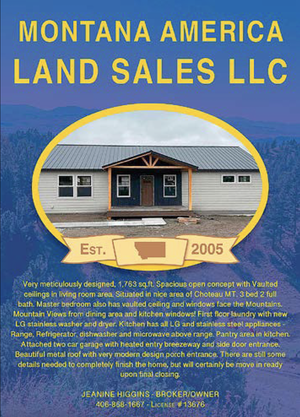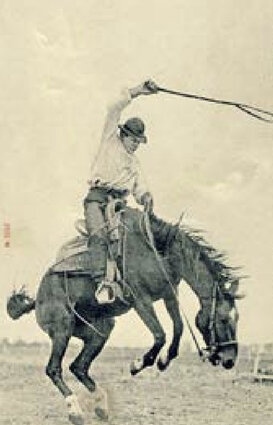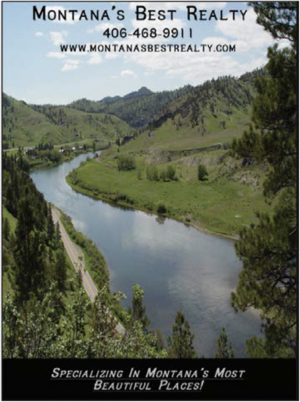Deeply Rooted In Montana
April 11, 2024
One of Montana’s great agricultural crops that is often overlooked yet continues to be grown, in appreciation for its nutritional values, in humans and in animals, is Alfalfa. Discovery of its value to Agriculture and human nutrition is ongoing and revolutionary as each decade is written in the history of Big Sky.
As diverse and complex as the geography of Montana is, the underlying soil supporting the landscape and life of the State is equally complex. In addition to seeing climate change and soil erosion progress over time, we have seen the people and animals in the State struggle to maintain sustaining numbers and success. More recently, waterfowl and fish are being affected by ecological change around the world, not just in Montana. Those of us who live and make a living in this State often carry a sort of superior attitude in our approach to the big sky and the open space we enjoy daily. It seems, on a good day, flowing streams and rivers will never run out and the air that feels so good will remain ever fresh and pure. This infatuation with Montana couldn’t be further from fact.
For farmers of Montana, water on the Hi-Line from St. Mary and Milk Rivers watershed has kept Agriculture at its best in the area known as the Golden Triangle. Livestock and crops grown in this strange and beautiful landscape are superior in nutrition and heartiness compared to most other areas of the globe. Thankfully, Senator Jon Tester knows well the fragility of the people, land, and water supply of Big Sky. Why wouldn’t he? His roots developed in the area where some of the first crop of alfalfa grew and was harvested in Montana.
In late 1901 or early spring of 1902, a man by the name of Henry O’Hanlon brought a train car of alfalfa seed to Chinook, Montana. Henry was a friend of James J. Hill. That moment in time, James J. Hill was a real asset to have as a friend. The Great Northern Railroad brought most of the would-be pioneers into the State along with their families, goods, and livestock. Along the railroad tracks, James Hill encouraged community growth and comradery by building churches encouraging communities to form centralized cities with organized law and order.
Henry O’Hanlon was not much of a farmer. He was a catholic who was a great mentor to John Matheson. This was a rather odd pairing as John Matheson was a Mason and stern Scotch-Presbyterian who knew no one of import in Chinook Montana when he stepped off the train January 4, 1891. From this pairing sprouted alfalfa. John with his ditch business and irrigation interests and O’Hanlon with his entrepreneurial connections and finance.

The first train car full of alfalfa arrived in Chinook in the early spring of 1902. Even though John Matheson and Henry O’Hanlon shared the belief the Milk River Valley had a great future in agriculture, neither of them knew anything about growing or harvesting alfalfa. Henry O’Hanlon practically gave away the seed to encourage farmers to give it a try that first spring.
John Matheson needed no incentive to give the seed a try. He had been growing his farm acreage since departing the train the spring of 1891. John planted 200 acres of alfalfa the first year. From that first crop came a bountiful yield. Not knowing how to thrash the plant, John and Henry got Herman Hermes from the ford at West Fork of the Milk River to thrash it for them.
John planted the thrashed straw from that first harvest in his farm ground the Fall of 1904. The second crop yielded 5 bushels of seed per acre. O’Hanlon determined the crop to be a success for Montana agriculture and set up a small mill for cleaning the harvest. When the farmers heard about the crop yeild, O’Hanlon had no difficulty selling the seed. McNamara’s of Big Sandy were good friends of the Matheson family and became one of O’Hanlon’s best customers in those first years.
John Matheson is the father of Roy Matheson. For you cowboys reading this piece, Roy Matheson is the young rider on Buckle on “the Bronco” postcard Helen and Chas E. Morris made world famous in the early 1900’s. There’s the common thread. The story doesn’t end here.
Today (2024), there is another farmer in Big Sandy making big waves. His story begins with the fascinating plant commonly known as alfalfa, and sprouts Kamut flour and snack products. In the fall of 1986, Bob Quinn launched his first experiment with organic crop production. Hailing from Big Sandy, Montana, Bob’s family farm has become a jewel in Hill County’s golden triangle crown. In 1986 Bob planted a row of wheat seeds closer together than the standard 14-inch separation. Rows seven inches apart with a volunteer stand of alfalfa combined to form a canopy of shade nurturing the wheat seedlings. The nitrogen rich root system of the alfalfa plants further nourished the grain.
Kamut products come from Bob’s Quinns fascination of this ancient grain. Bob found out the “boat” called the Ark carried the heirloom seeds. He had the grain genetically analyzed patenting the seed. Snack your way tobetter health. Give Kamut products a try.
Grow healthy soil and you also will grow in health. Work with nature instead of against it. Everything we need, we have. Use it or lose it.





Reader Comments(0)